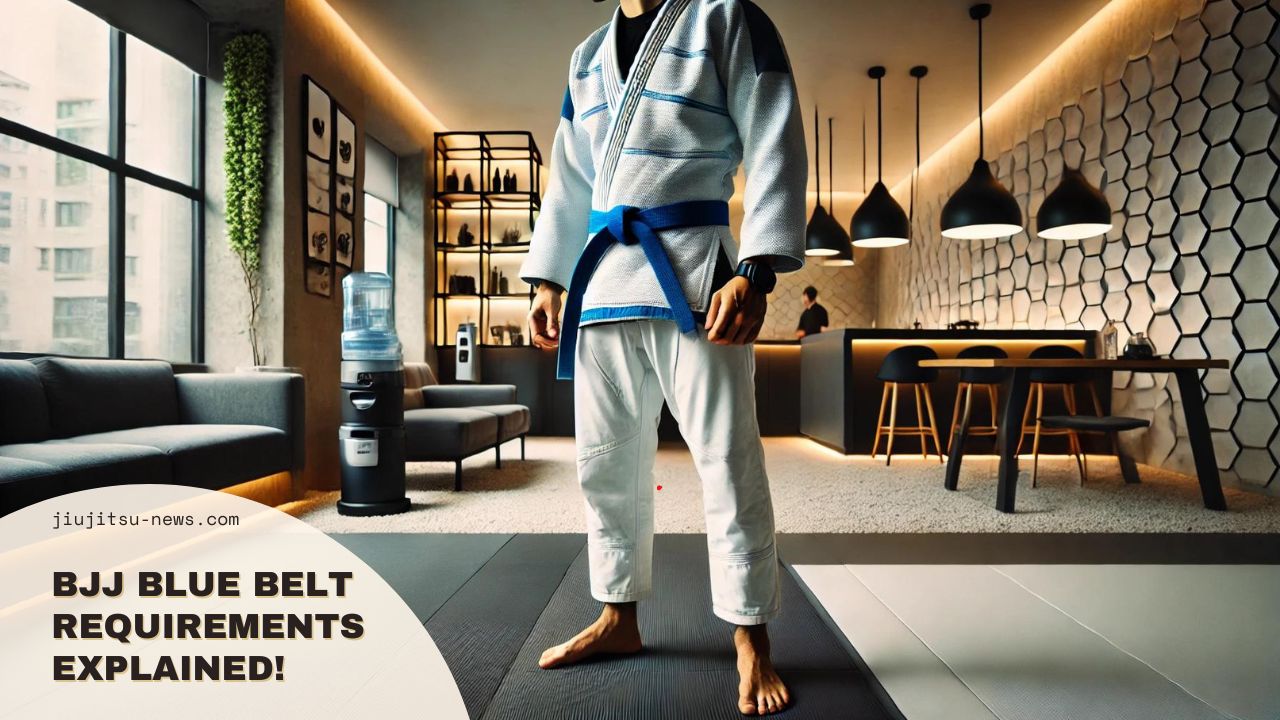The BJJ blue belt requirements cause many practitioners considerable difficulty. Many people are unsure about their development and objectives, as the path from white to blue belt can be unclear and demanding.




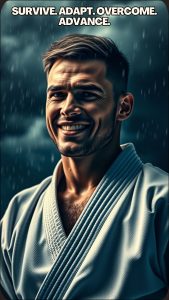
This article will walk you through the blue belt earning requirements. We will go over your technical skills, an appropriate attitude, how to stay dedicated to training, and what to expect as you develop.
White Belt vs Blue Belt: A Overview
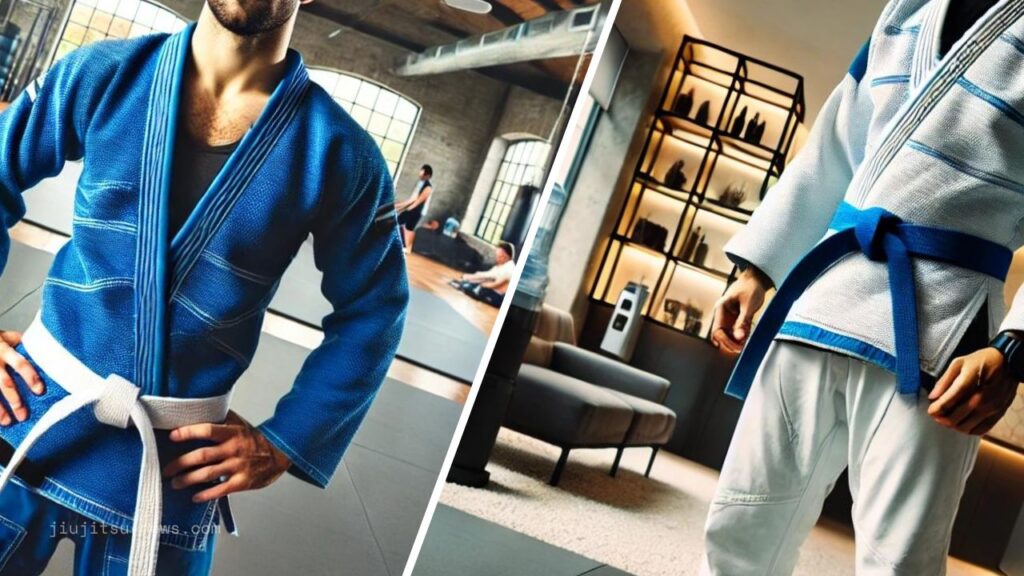
White Belts Analysis
- White belts sometimes have a poor grasp of jiu-jitsu because they lack knowledge of required positions and techniques.
- Their movements are not yet refined, thus they spend a lot of energy doing simple motions.
- Typically lacking the mobility and strength required for good jiu-jitsu, white belts
- Their priorities are survival above attack.
- Their often ineffective grip and distance management make it more difficult to control their opponent.
- White belts battle with problem-solving during rolling sessions.
- Ego problems can be a major obstacle causing frustration and slower advancement.
Blue Belts Analysis
- Blue belts allow a more flexible game since their range of techniques for both defense and attack is larger.
- They remain cool under trying circumstances and use their energy more wisely.
- Improved strength and mobility of blue belts help to produce more efficient motions.
- Good distance management and effective grips enable them to help to better control their opponent.
- Blue belts help their constant development by keeping a competitive attitude and a good mental attitude.
- On the mat, they show great dedication and have strong problem-solving ability, which will help them to adjust and conquer obstacles during training and sparring.
Understanding the Blue Belt
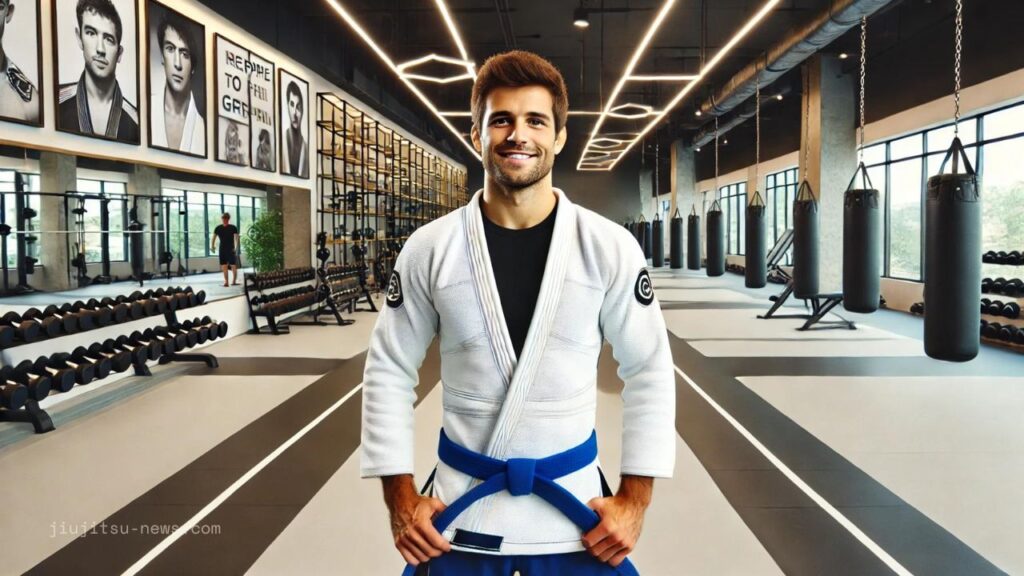
In Brazilian Jiu-Jitsu, earning a blue belt indicates that one is a competent fighter capable of efficient relaxation, attack, and defense.
Though this schedule can vary by academy, the path from white to blue belt usually takes 2–3 years. Promotion calls for mastery of moves and techniques.
Knowing and emphasizing the criteria will help you stay out of the 75% of white belts who quit.
BJJ Blue Belt Requirements
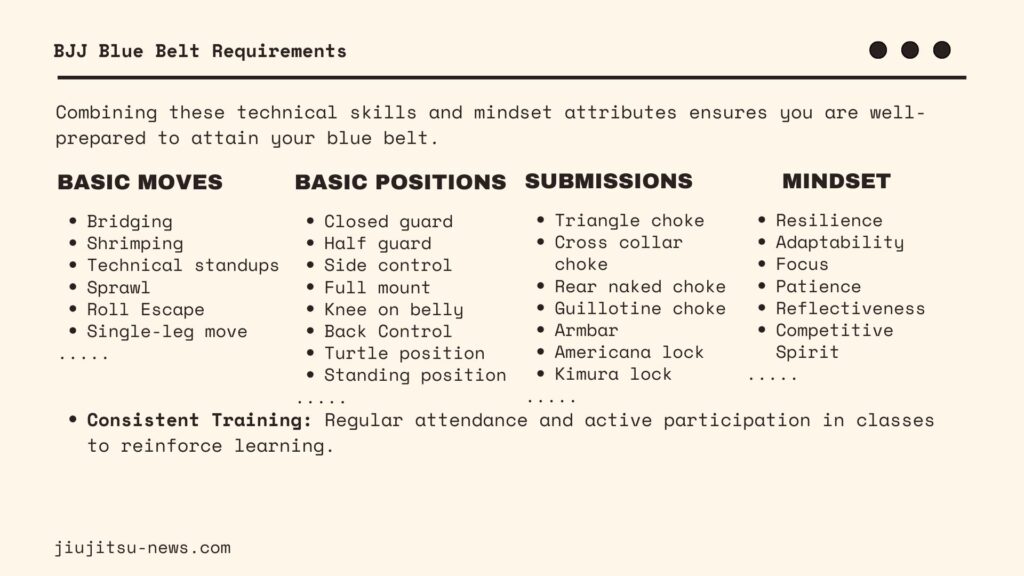
In Brazilian Jiu-Jitsu, you have to show technical mastery and a strong mindset that supports ongoing development and efficient grappling under pressure to get a blue belt.
Combining the following technical abilities with mindset traits guarantees a practitioner’s readiness to earn their blue belt.
Demanded Fundamental Moves
- Bridging
- Shrimping
- Technical standups
- Sprawl
- Roll Escape
- Single-leg move
These movements are essential for building a solid base in BJJ, enhancing both offensive and defensive capabilities.
Needed Positions
- Closed guard
- Half guard
- Side control
- Full mount
- Knee on belly
- Back Control
- Turtle position
- Standing position
Mastery of these positions allows for greater control over an opponent, providing opportunities to apply various techniques effectively.
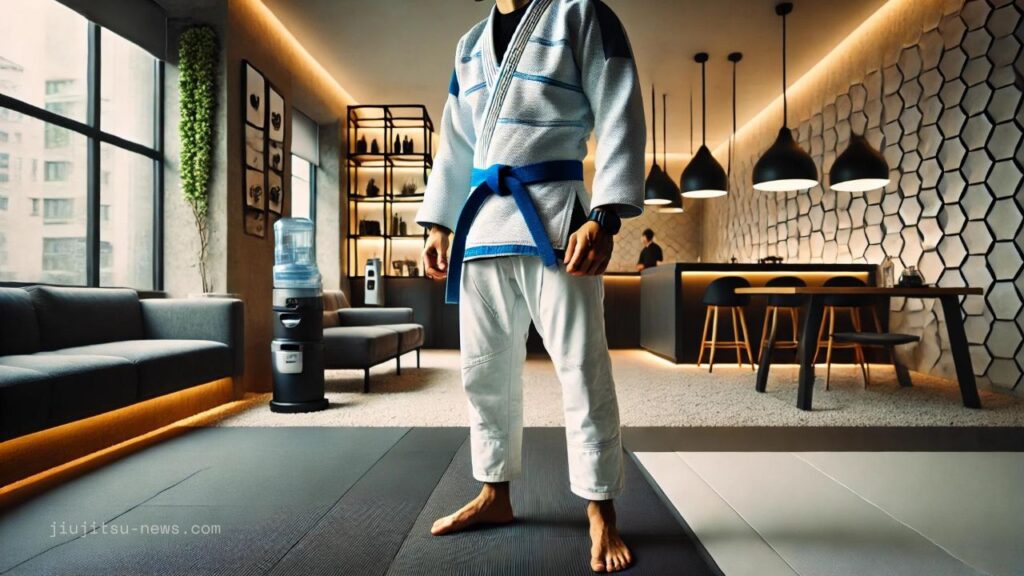
Required Techniques and Submissions
- Triangle choke
- Cross collar choke
- Rear naked choke
- Guillotine choke
- Armbar
- Americana lock
- Kimura lock
- Guard pull
- Basic guard retention techniques
- Over-under guard pass
- Toreando guard pass
- Knee slice pass
- Staple pass
- Closed guard break
- Hip bump sweep
- Scissor sweep
- Pendulum sweep
- Double and single-leg takedown
- Fundamental side control escapes
- Basic mount escapes
- Fundamental back control escapes
- Basic bottom turtle escapes
- Knee on belly escapes
These techniques form the core arsenal for a blue belt, enabling them to handle various situations during sparring or competition.
Mindset Requirements
- Resilience: Ability to bounce back from setbacks and continue training with enthusiasm.
- Adaptability: Skill in adjusting tactics and strategies based on the opponent’s moves.
- Focus: Concentration during training and matches to apply techniques correctly.
- Patience: Understanding that progress takes time and that persistence is vital to mastery.
- Reflectiveness: Regularly assessing one’s performance to identify areas for improvement.
- Competitive Spirit: Willingness to challenge oneself and others to foster growth.
- Respect: Upholding the ethics of BJJ, including respect for instructors, peers, and the art itself.
Additional Considerations
- Consistent Training: Regular attendance and active participation in classes to reinforce learning.
- Feedback Incorporation: Using critiques from instructors and peers to refine techniques and strategies.
- Physical Conditioning: Maintaining a fitness regimen that supports the physical demands of BJJ.
BJJ Blue Belt Promotion: The Test
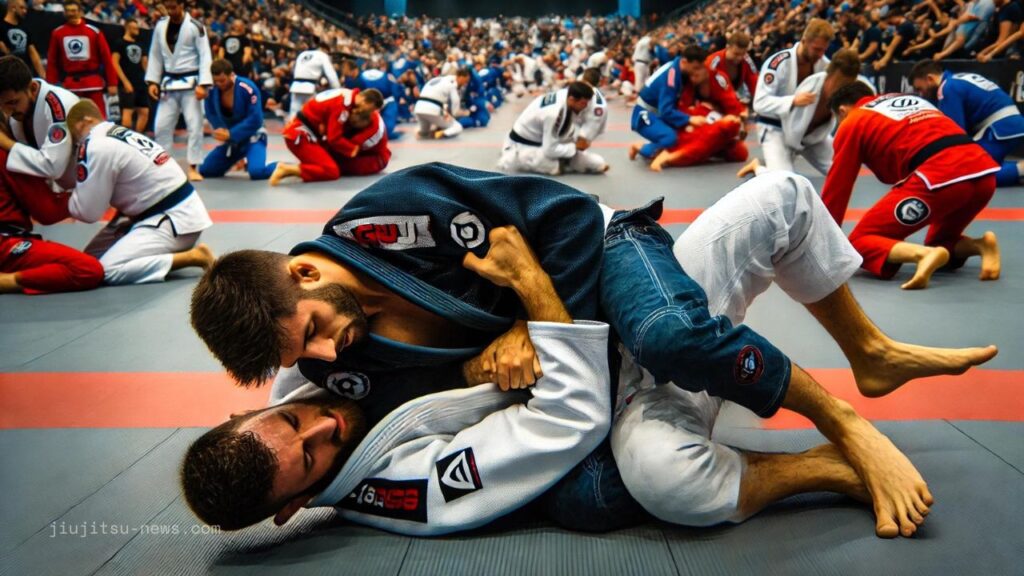
The blue belt test guarantees that a white belt satisfies the necessary training criteria.
Students’ knowledge of BJJ history, principles, physical prowess, mastery of fundamental movements, and technical skills is assessed.
Usually, the evaluation ends in a sparring session.
Blue Belt Level Achieved: What’s Next?
While achieving the blue belt rank is a significant achievement, the journey continues.
Keep learning and widen your focus to include more advanced roles and methods.
Discover several guard variants and passing strategies to improve your BJJ performance.
Final Thoughts
A major accomplishment, earning a blue belt in Brazilian Jiu-Jitsu marks your development from a novice to an intermediate practitioner. Maintain your dedication, keep learning, and keep challenging yourself.
Although everyone travels differently, with dedication and tenacity you will keep developing in BJJ.
Are you ready to explore the depths of MMA and Jiu-Jitsu? Get insider stories, fight breakdowns, and mindset gems delivered straight to your inbox. Subscribe Now!

